Drury's role as 'place of healing' after Civil War has shaped its 150-year history
At 1:30 p.m. Monday, Drury University president John Beuerlein will stand on the west lawn of Burnham Hall to ring the bell.
It is a meaningful nod to the auspicious start of one of the oldest private higher education institutions in this part of Missouri and part of a sesquicentennial celebration that will stretch into the spring.
On Sept. 25, 1873, Drury's first president Nathan Jackson Morrison stood in the window of an unfinished building to ring a dinner bell — borrowed from a boardinghouse — to signify the opening of the campus.
Drury presidents, campus historians and prominent alumni say the university was created with a higher purpose in mind. At its core, it offers students a liberal arts education, but the way in which classes are taught, professors and students interact, and majors are structured is different.
They said the emphasis is on a highly personalized experience.
"The place, in its essence, was created out of a need that was recognized by the Congregationalists, the Church of Christ, to heal the wounds of the Civil War. Missouri was one of those states, half went north, half went south, and especially in Springfield, it was a very divided community," said Beuerlein, a philanthropist and retired financial adviser.
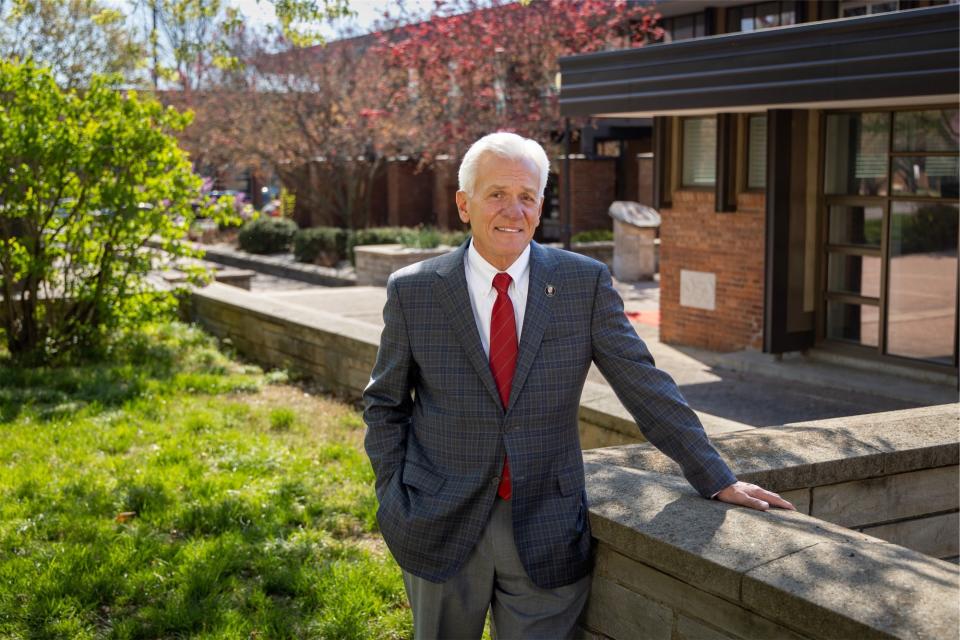
"This was created as a place of healing. They wanted to create a place where people of differing views could come together and hopefully, in a very civil way, listen to each other and find common ground. It was a very noble thing for them to try and do."
The founders, most of whom were abolitionists from New England, set out to create a rigorous academic learning environment inspired by liberal arts colleges in the north — including Dartmouth, Yale and Harvard. The institution was wanted by area churches, who selected Springfield over Neosho for the campus.
The school was briefly named Springfield College but quickly renamed Drury College after the late son of one of the founders. It became Drury University in 2000.
Drury archivist William Garvin, who recently wrote a pictorial history book of the campus, said the founders were all "outsiders" and the institution was shaped by both its location and time in history. It was less than a decade after the end of the Civil War and a few years before the Battle of the Little Bighorn.
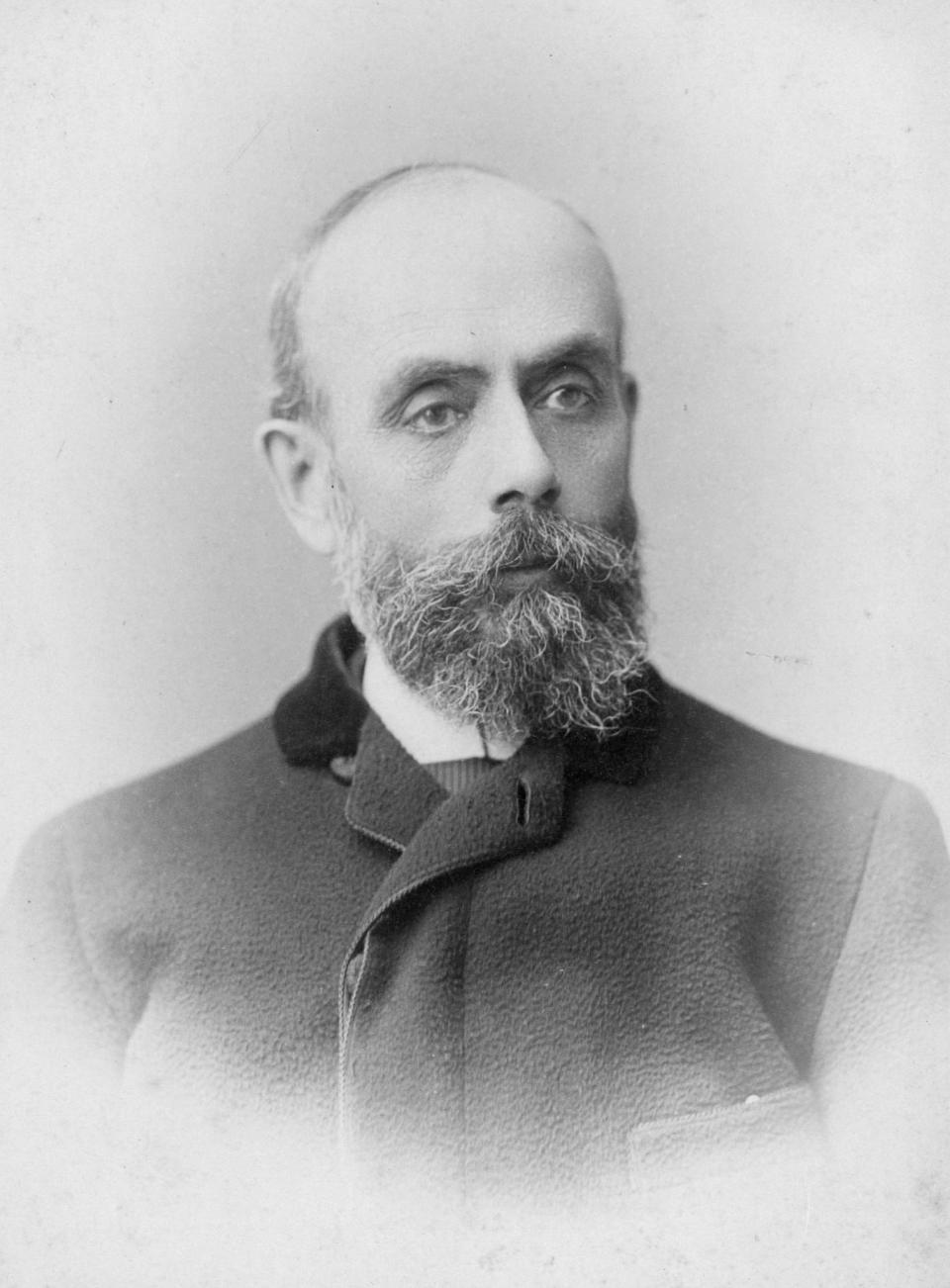
"It was a community that was really torn apart during the Civil War. Feelings are still very, very raw," he said, adding Morrison, the first president, was "very sensitive to that."
Garvin said fundraising materials from the early days showed Drury was on both a Christian and political mission to be part of the "silent work of reconciliation."
"One of the things Morrison says in these handbills he's giving to potential donors is in our classrooms now we have the children of men who fought on both sides and seven or eight years ago were fighting on a thousand bloody battlefields across the country," Garvin recalled. "Now they are sitting in classrooms together, talking and learning together and being mutually understood."
Beuerlein, who graduated in 1975, said Drury has a symbiotic relationship with Springfield and southwest Missouri even though it draws students from far beyond. This year, enrollment includes students from 26 states and multiple countries including 10 from Nepal.
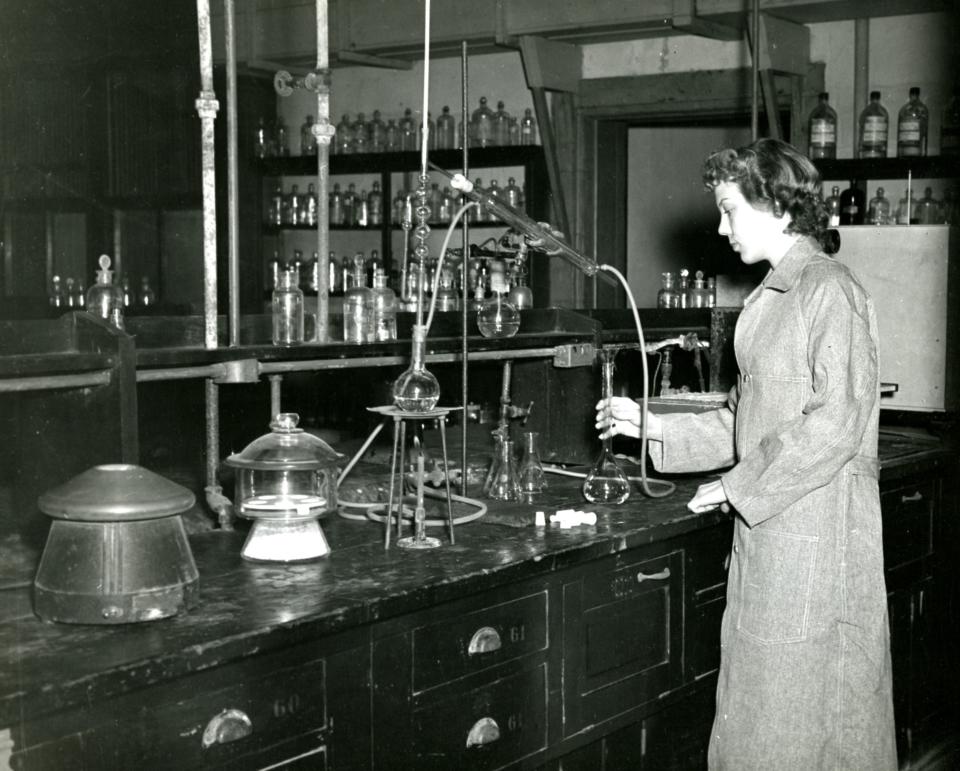
He said the ideals used to create the university have continued to inform how it operates. He described it as a safe place or a "sanctuary" for ideas.
"We always say it is a liberal pursuit of the truth but we are not pursuing liberalism," he said. "...If you shine a light on both sides, it will speak to you. It would be inappropriate for us to push you to the left or to the right. It would be very appropriate for us to show you both sides in a safe, respectful, civil way. That was true back then. It is still true today."
'The mission hasn't changed'
Todd Parnell, who spent five years as Drury's 16th president, said the university's graduates have helped shape the Springfield community and many others in leadership roles.
"It is mindboggling to be 150 years old and I'm so thrilled that we are able to celebrate this milestone," said Parnell, a retired banker and community and environmental advocate, of Drury. "The mission hasn't changed. It is to provide an education that encourages independent thought and creative problem-solving and entrepreneurial approaches to any situation. That is as needed today as it has ever been."
Parnell said he was struck by the "personal nature" of the campus, which is a bedrock.
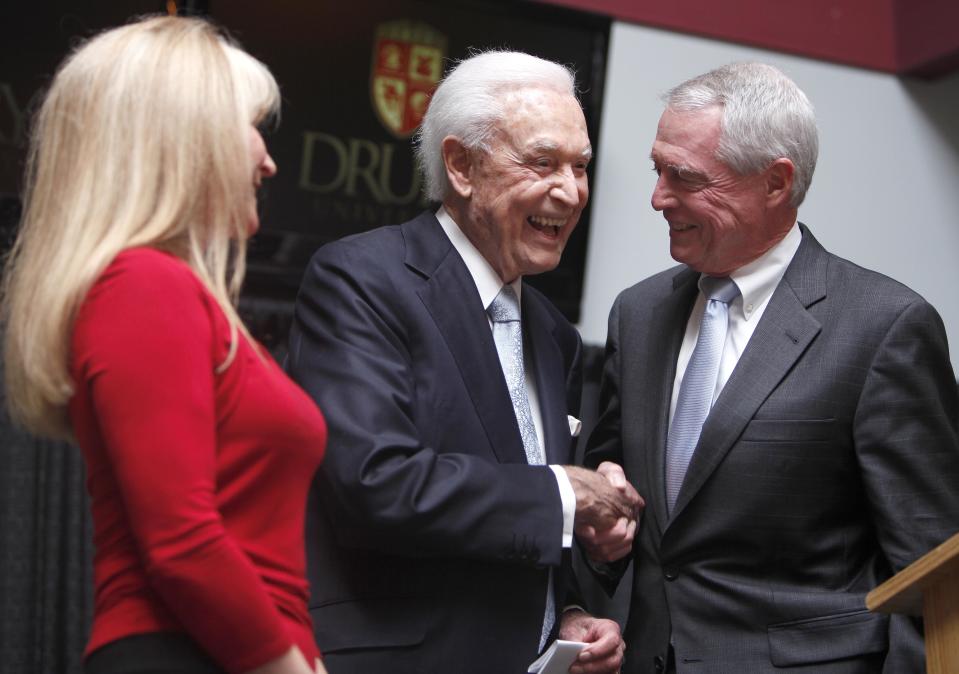
"It is the approachability of everybody on campus, the commitment of professors to being available to students, to provide personal and specific educational support," he said. "I was a beneficiary of that. All of my children who have gone to Drury have been beneficiaries of that and that hasn't changed."
Kaitlyn McConnell, who has a degree in integrated media from Drury, has worked in communications in Springfield and oversees, but may be best-known locally as the founder of Ozarks Alive, a cultural preservation project.
In high school, she started taking trumpet lessons with Tijuana Julian, who now oversees housing and residence life, and fell in love with the campus.
"The atmosphere on campus was wonderful. You could tell it was a place with a really thoughtful vibe," said McConnell, noting it was the only place she applied.
She said size of the campus was a benefit that allowed her to play trumpet in wind symphony and be part of the rich journalism program.
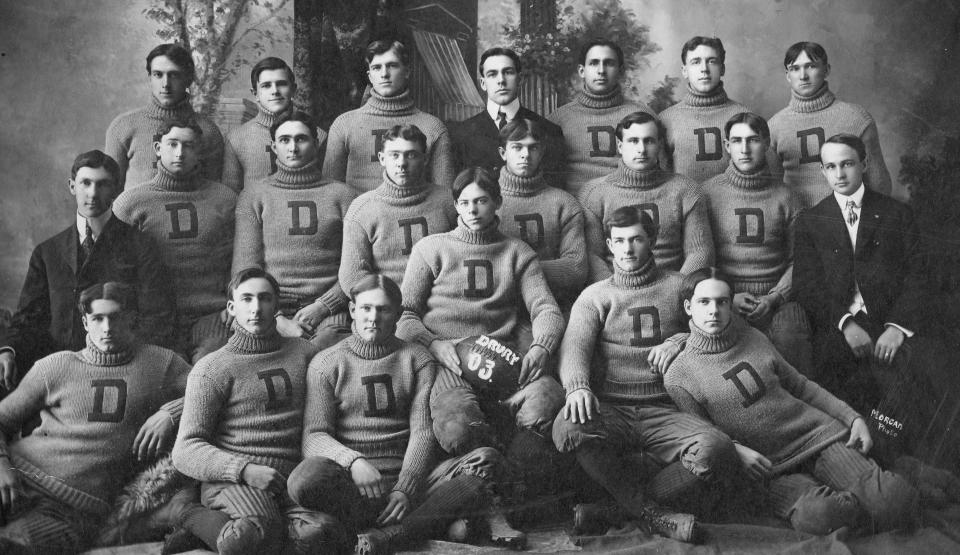
"My best memory of being at Drury was when I got to be involved with the Mirror," she said of the independent, student-led newspaper on campus.
Over three years, she filled different roles including editor-in-chief. She said her advisors and the communications professors became mentors and friends.
"That was a life-changing experience being able to make decisions, work with a team and develop this product every week was amazing. I value that and the environment we were allowed to do that in," she said.
'They were way ahead of their time'
The initial curriculum focused heavily on music, religion and education. Early enrollment included women and Native Americans.
"When we think about diversity it is a big deal. Back then it wasn't a priority, like it is today, so they were way ahead of their time," Beuerlein said.
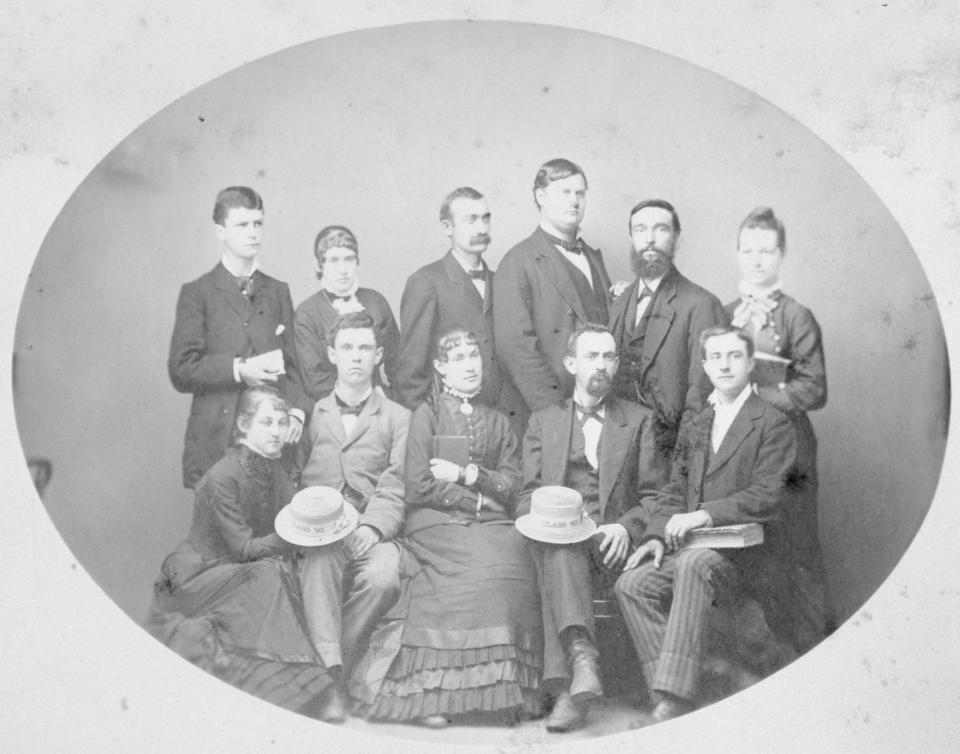
Two sisters, Anna and Emma Grigg were present on the first day of classes and were among five women who made up the first graduating class in June 1875.
By the turn of the last century, the campus was home to Stone Chapel, the president's house and several academic buildings.
The campus has grown to more than 90 acres and includes a mix of newer and historic buildings. In recent years, as part of capital campaigns, it expanded programs, extracurricular activities and scholarships. Drury also constructed the new C.H. “Chub” O’Reilly Enterprise Center and Breech School of Business Administration.
"Since we've started this place, we've graduated over 45,000 people," Beuerlein said. "There are lots of folks who have made Springfield better off because of Drury being here."
Beuerlein said Drury, like smaller private colleges and universities across the U.S., has struggled with enrollment and funding amid a shifting higher education landscape.
"We are square in the middle of that firestorm nationally questioning the value of the liberal arts," he said.
As a result, institutions have retooled academic offerings, tightened financial budgets, and relied heavily on donors. Drury has not been immune.
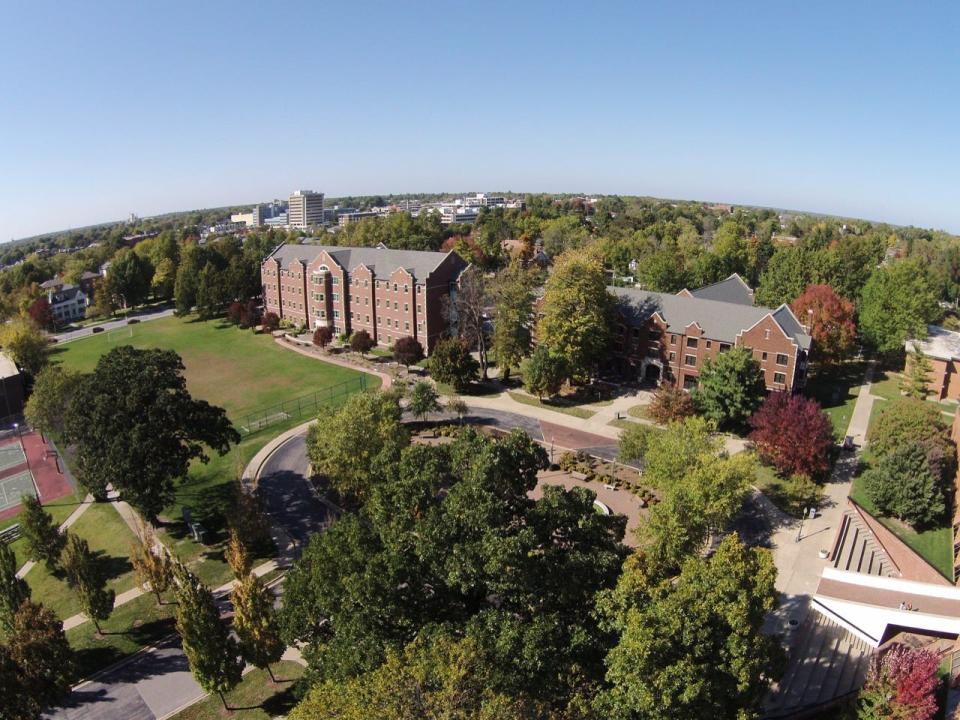
Bob Dixon, presiding commissioner of Greene County, said Drury was the right fit. He earned a master's degree and later taught as an adjunct instructor.
"Being a smaller school, there was a lot more attention to the individual student," said Dixon, who leaves near the campus. "It was a great experience and one I have appreciated more and more."
He said his evening classes were taught by working professionals including a criminal justice course taught by Tom Mountjoy, who has been a prosecuting attorney and judge, He said they provide practical knowledge about "how everything related in the real world."
Beuerlein said Drury encourages students to explore a wide range of subjects and interests in an effort to find their passion and become more well-rounded.
"It really can light a fire and an interest that you didn't even know you had," he said.
"What Drury likes to do is create a person who has an appreciation for understanding the world around them."
Founders Day event
Several events are scheduled for Founder's Day on Monday. All activities are free and open to the public but seating is limited for the convocation so registration is required. The events include:
12:30 p.m. − Group picture at Sunderland Field (open to alumni, students, parents, faculty, staff, friends, fans, and community)
1:30 p.m. − Bell Ringing on the west side of Burnham Hall, then a convocation in Stone Chapel immediately following, which includes a composition commissioned especially for the Sesquicentennial Celebration.
2:30 p.m. − Reception at the Judy Thompson Executive Conference Center with a president's discussion panel.
Claudette Riley covers education for the News-Leader. Email tips and story ideas to criley@news-Leader.com.
This article originally appeared on Springfield News-Leader: Drury celebrates 150 years, role as 'place of healing' after Civil War

